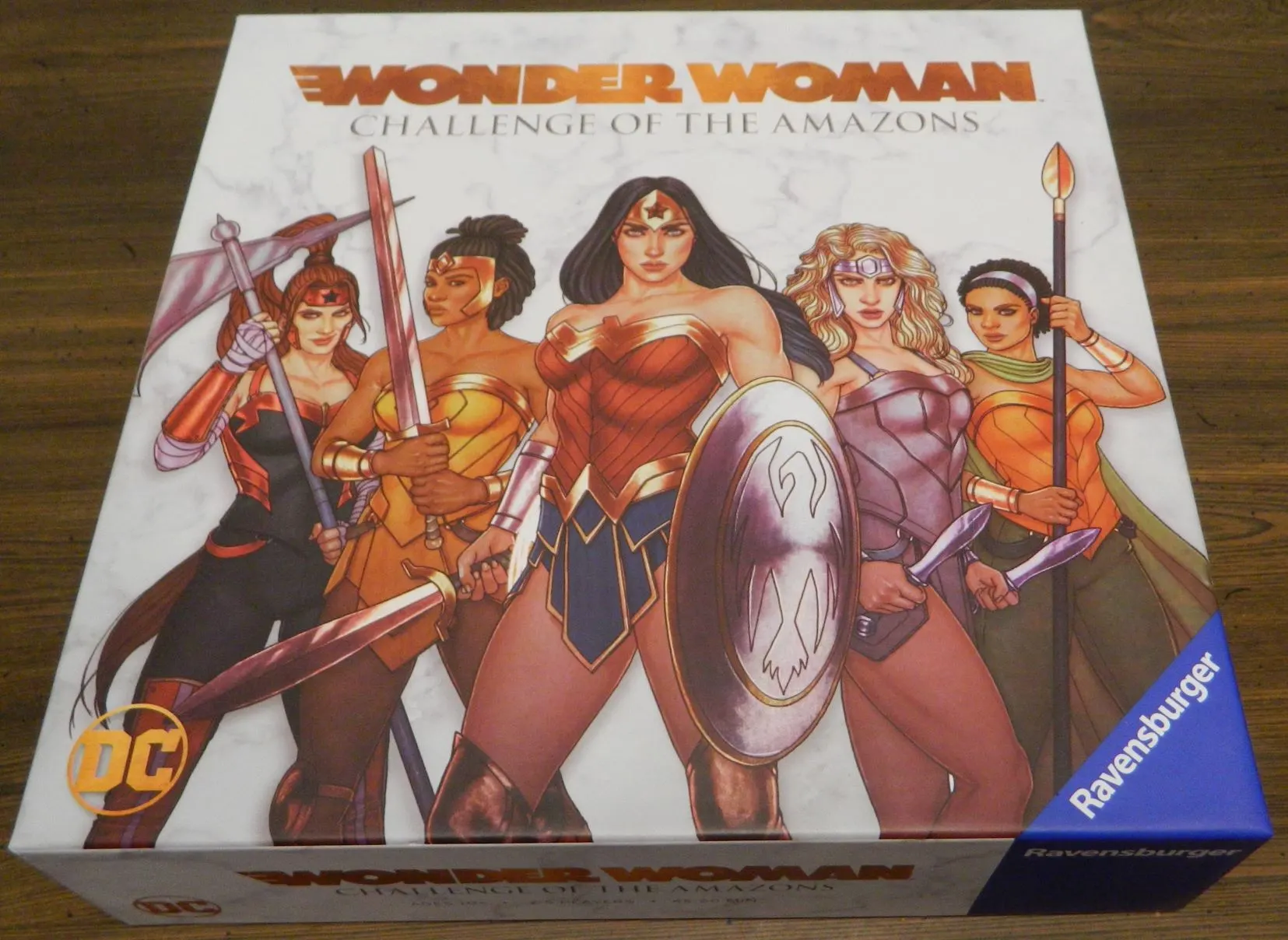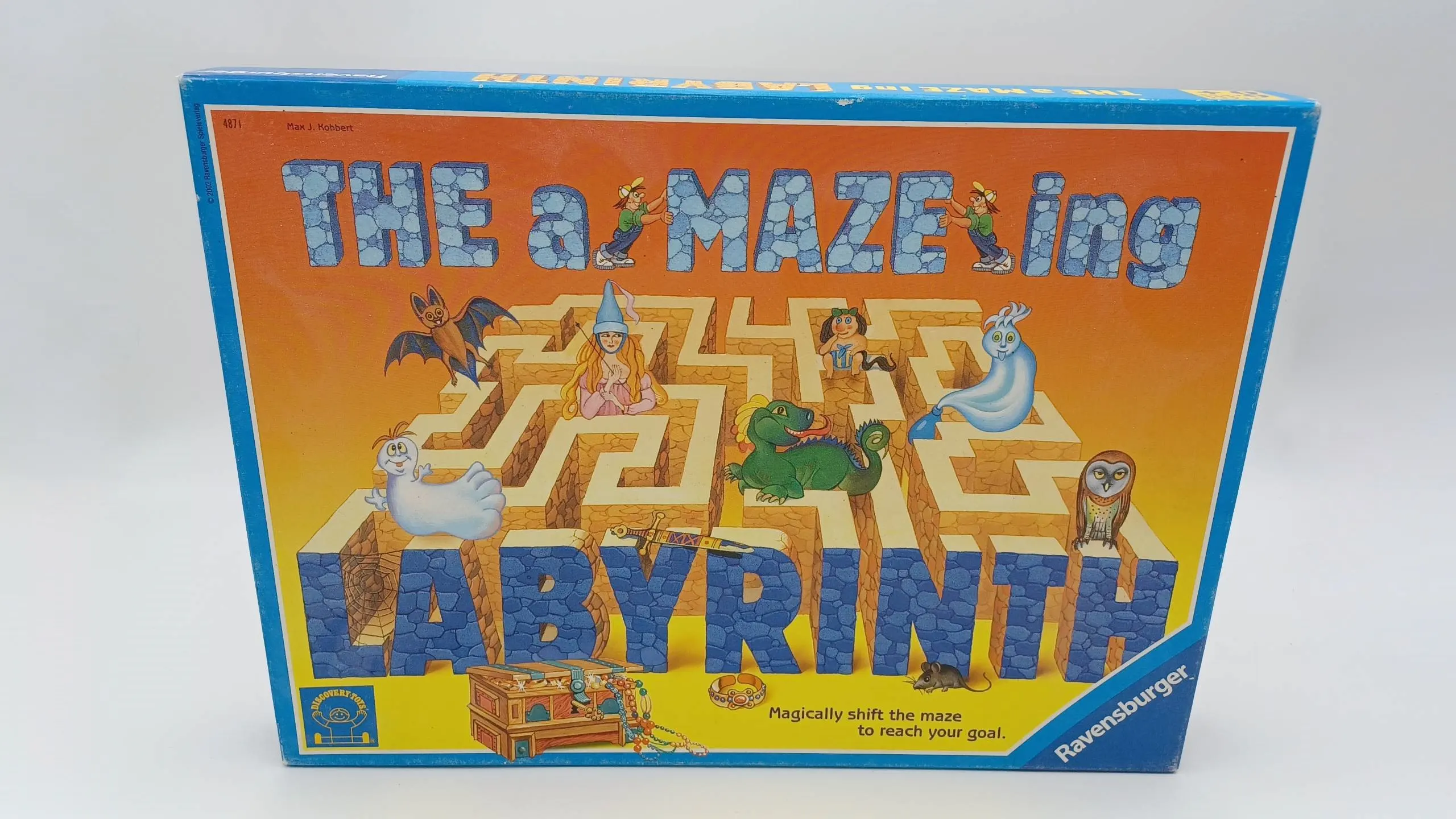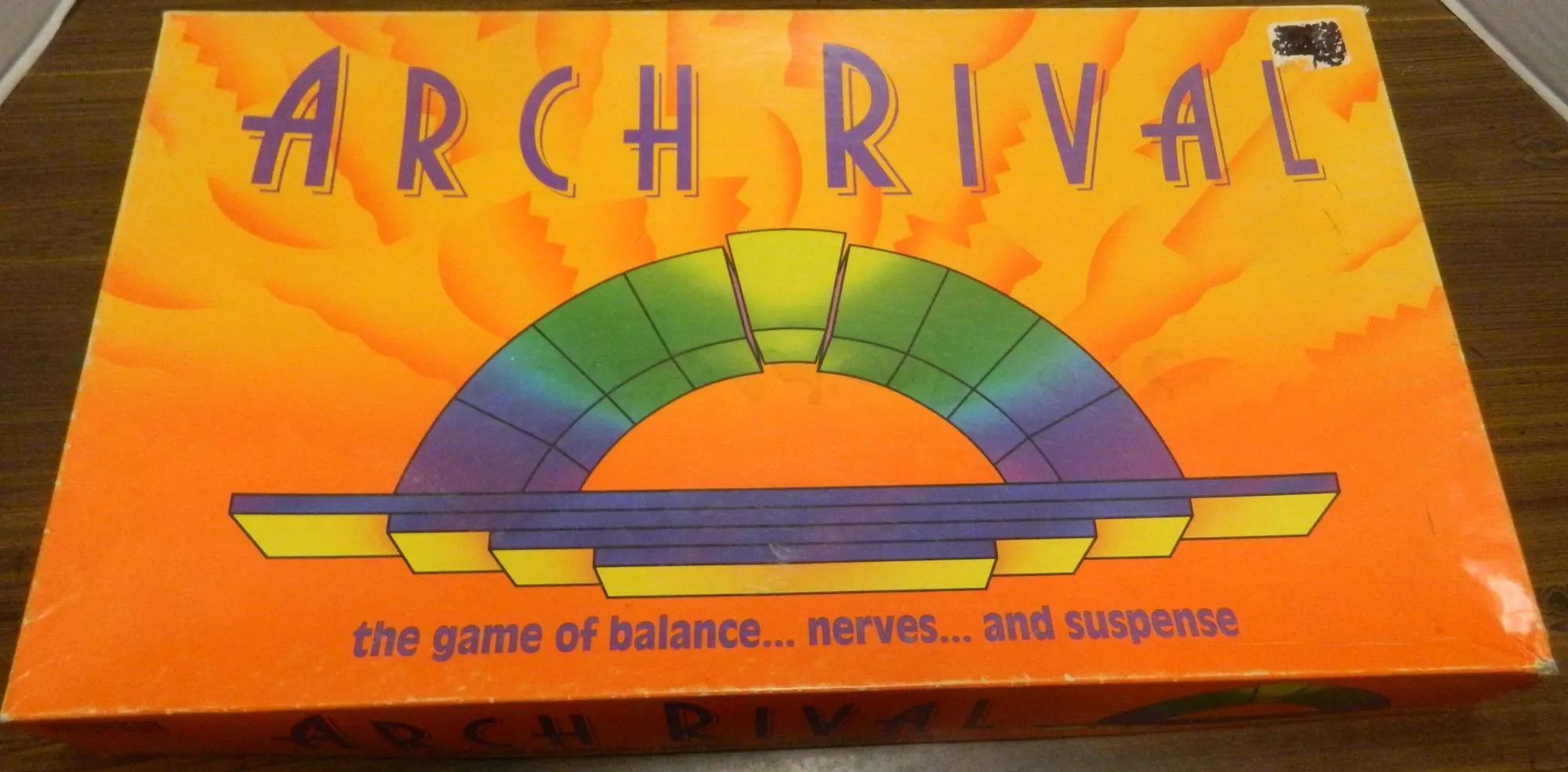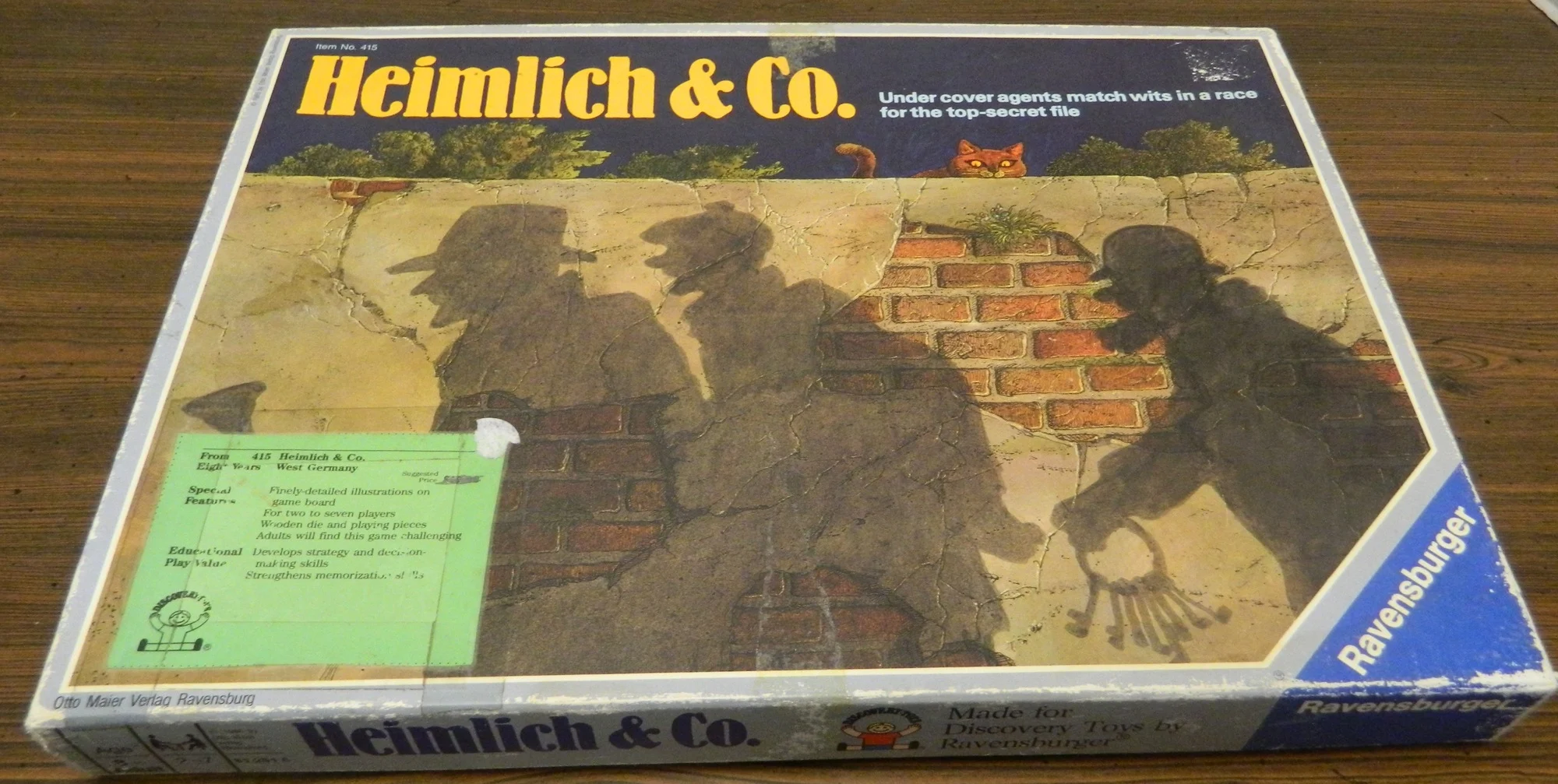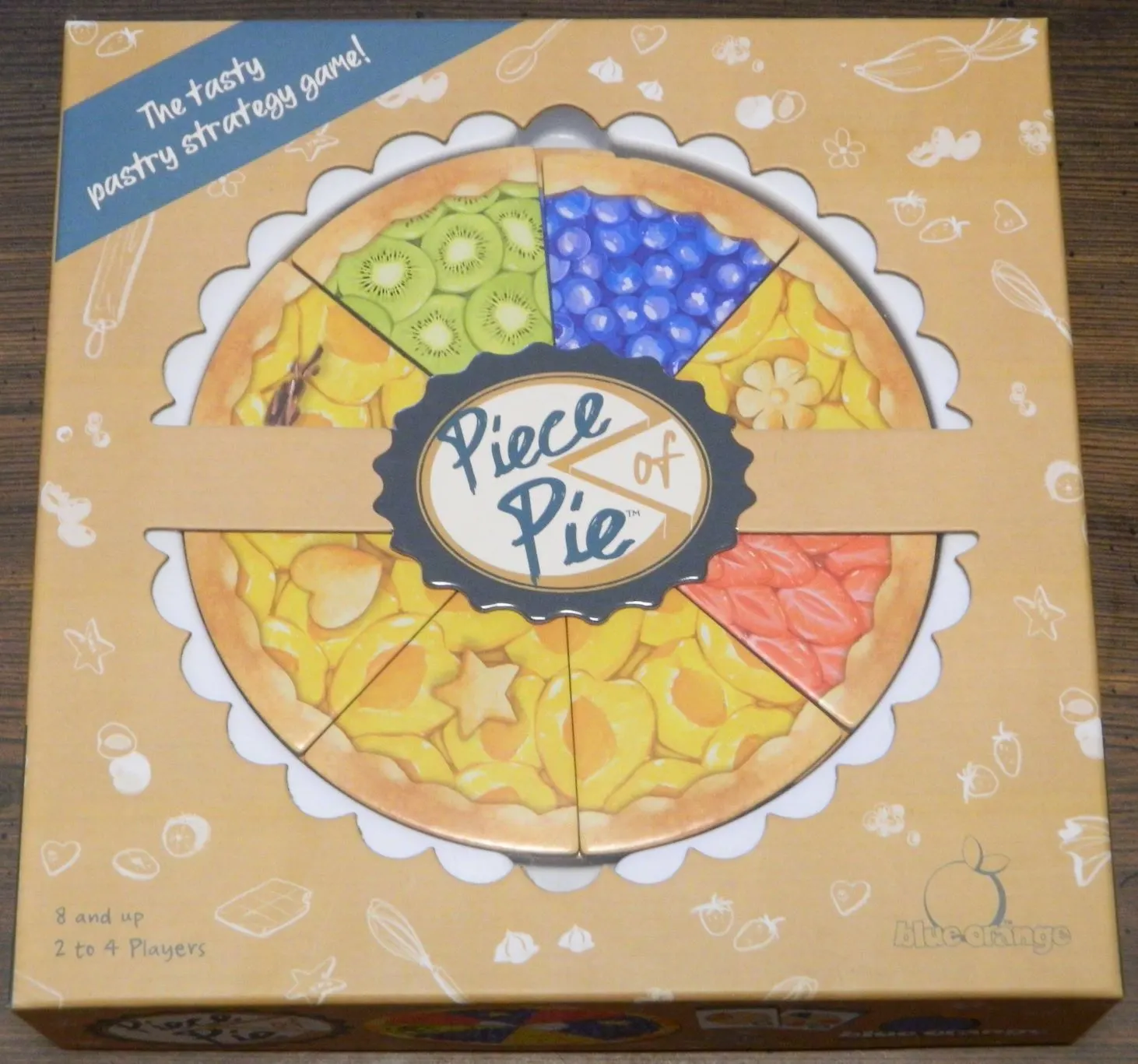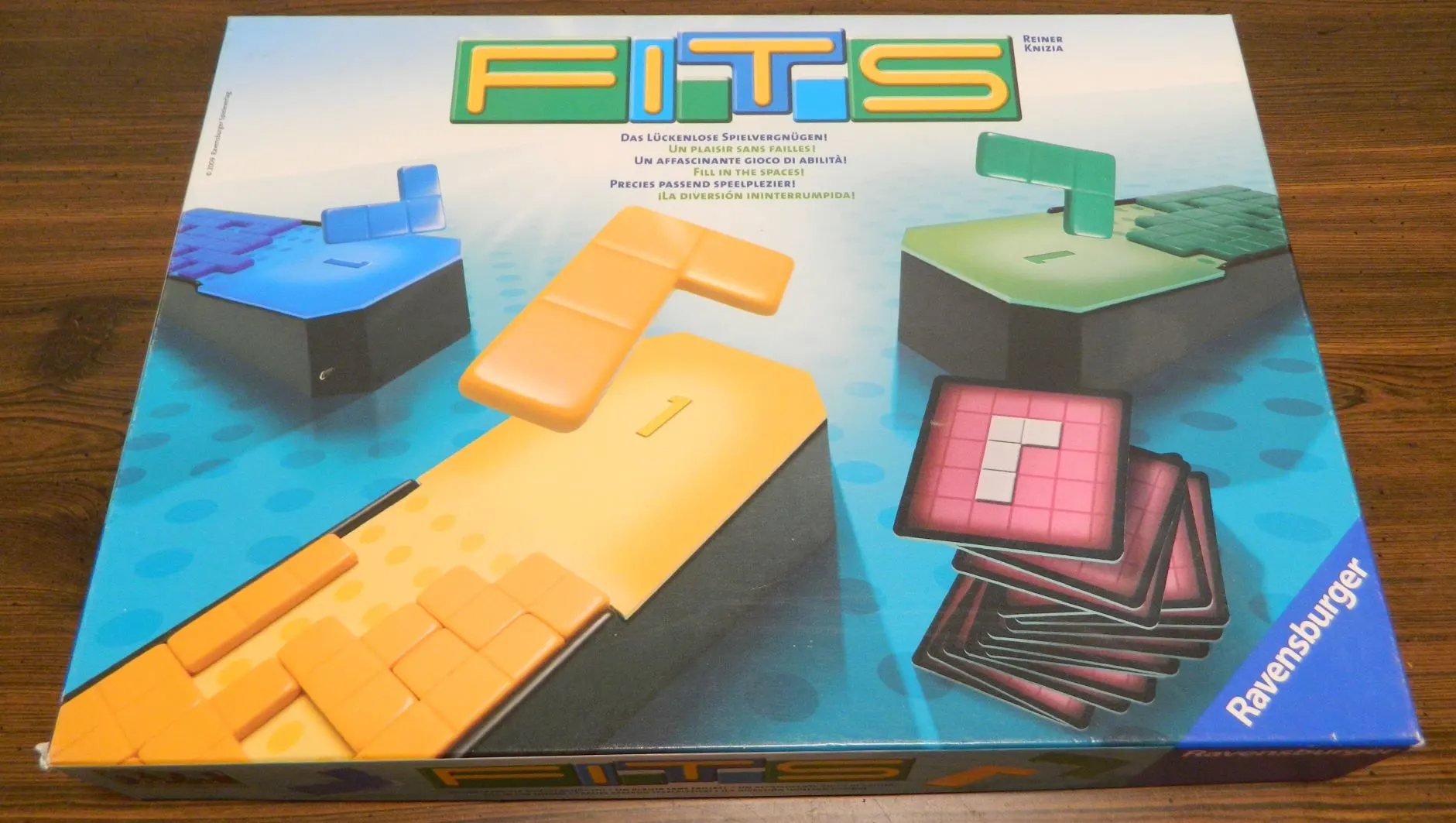In the last decade or so the genre of cooperative board games have really taken off. While I really enjoy competitive games as well, there is something that is particularly enjoyable about playing a good cooperative game. Instead of competing against other players, all of the players work together to try and beat the game itself. To succeed at most of these games players must work well together in order to craft a strategy that helps the players either survive long enough or defeat the evil force that stands in their way. I have enjoyed almost every cooperative game that I have played and was interested in checking out Wonder Woman: Challenge of the Amazons which was released earlier this year. While I am probably a bigger Marvel fan, I am still a pretty big fan of DC so I was wondering how a cooperative superhero game would work. Wonder Woman: Challenge of the Amazons does a good job utilizing the Wonder Woman theme to create a compelling and challenging cooperative game that fans of the genre should really enjoy.
As the rules for Wonder Woman: Challenge of the Amazons are quite long I decided to put the rules overview in its own post. You can check out how to play the game here.
Anyone who is familiar with cooperative board games are likely going to see Wonder Woman: Challenge of the Amazons as very similar to your typical cooperative game. In some ways this comparison is warranted as the game shares quite a bit in common with many games from this genre. The theme is very different, but the first game that comes to my mind is Pandemic. Wonder Woman: Challenge of the Amazons doesn’t really feature the spreading mechanic that Pandemic has, but much of the gameplay is still focused around trying to contain various outbreaks around the board before they get too bad and snowball to the point where they are insurmountable. Much of the gameplay also revolves around players moving around the game board and taking various actions as players work together to defeat the forces facing them.
While many elements of Wonder Woman: Challenge of the Amazons might be similar to other cooperative games, this is not really a bad thing. I found it to be a very good cooperative game. The game succeeds because it crafts its mechanics around players having to work together in order to succeed. Players can’t win the game if everyone does their own thing. The team has to come up with a team-wide strategy with each player playing their role in order to get everything accomplished. The game really succeeds at creating a satisfying cooperative experience.
Many of the mechanics in Wonder Woman: Challenge of the Amazons are similar to your typical cooperative game. The one thing that differentiates the game is how it releases information to the players. After dealing with the initial enemy actions all of the players are dealt face up Hero cards which allows the players to see what potential actions they can take on their turn. With this information and the situation on the gameboard the players will craft their strategy for the round. The players will determine what areas of the board need to be focused on and what each player will be responsible for. For example the players may decide that one player will be responsible for taking the enemies out on a particular space due to their current location and face up cards. To succeed in the game the players need to come up with a comprehensive strategy so each player knows what they will be responsible for. This element of the game is not much different than any other cooperative game.
At the same time that players are dealt the face up cards though, each player will also be dealt cards face down. These cards cannot be looked at until the next phase. This conveniently is also the time when players can no longer communicate. Therefore each player has several cards that they didn’t know about when they were planning the initial strategy. Maybe these cards won’t make much of a difference and the players will stick to the agreed on plan. The game becomes much more interesting though when a player either doesn’t get an Emblem that they were planning on getting, or they get a card that could be very helpful. In this case players may want to ad-lib their strategy some to take advantage of some of these cards. These players know what the initial strategy was so they need to decide whether it is worth deviating from the plan to try and implement a better plan. The players may build contingencies into their plan to account for this, but they might not always be able to. It is really interesting to see if a team’s strategy came together when all of the played cards are revealed.
At first glance this might not seem like a big twist to the formula, but in action it actually plays a much bigger role than you would expect. Determining whether to stick with the plan or trying for a better plan is a really interesting decision in the game. It can play a really big role in how successful you are as well. In some situations you don’t have all of the cards that you need to complete your plan and are just hoping that you were dealt the right card(s) face down. In others you can implement a plan that would be more beneficial to the team, but you don’t know if it will affect what the other players plan on doing. This is a really interesting twist to the game and in my opinion really makes the game stand out. An added benefit is that it also somewhat nullifies an alpha player (a player that basically tells everyone else what to do) as each player ultimately has to make the decision for themselves on what cards they are going to play.
While the cooperative genre has really been growing in recent years, people that have never played a cooperative game before are probably kind of intimidated by the genre as it is quite a bit different than any other board game that they have ever played before. Therefore when you get to the question of difficulty things are a little more complicated for this genre. In general I would say that Wonder Woman: Challenge of the Amazons is moderately difficult. The game has a number of rules that you need to learn. People who are familiar with cooperative games should be able to pick up most of them pretty quickly. Those not familiar with the genre will take quite a bit longer though. I would guess that the game would take at least fifteen minutes to explain to new players. With the number of mechanics in the game it also will likely take players a couple rounds to familiarize themselves with the game. The good news is that once you have adjusted to the game it becomes quite a bit easier to play. Once you are used to playing it there really aren’t any issues with the game.
As for how hard it is to actually win the game I think it kind of depends. I would say that the game is challenging, but not so challenging that it is impossible to win. In order to win you need to play smart and make good decisions. One bad decision could literally lose you the game. In order to win the game you and your team need to come up with a good strategy as players can’t waste many actions that don’t do anything. Even if you play a good game though most games come down to the wire. For example in one game that we played we literally won on the last turn as we were able to beat Ares just before he would have taken out our last Defense. If we would have needed just one more action we would have lost the game. For those that think the game is too easy though, the game was smart to include several ways of making the game more difficult. The game has a harder difficulty setting which adds more health to the enemy. The game also suggests taking out specific relics when fighting each enemy as they are particularly helpful in those fights. If you wanted to make the game even more difficult you could just draw more enemy cards each turn as that would force you to have to deal with more enemies each round.
A decent amount of your success in the game is going to come down to luck. The cards you draw as well as the cards that are drawn for the enemy are going to play a big role in how the game turns out. Lets begin with the enemy cards. Each of the enemy decks have stronger and weaker cards. If you have to deal with most of these harder cards early in the game it will be much harder to win. The order in which the cards come out can play a big role as well. The cards that are drawn can create a snowball effect where things just keep getting worse or you could get cards that don’t impact one another much. As for the Hero cards you draw you need to draw cards with the symbols you need in order to take the necessary actions. You might have the perfect strategy, but if you don’t get the right cards there is nothing that you can do. In many cases you won’t receive all of the cards face up that you need to put your plan in place so you need to hope that the players were dealt the right cards face down or your plan could fall apart.
One of the things that surprised me most about Wonder Woman: Challenge of the Amazons was the addition of three different enemies that you can face. Many cooperative games have a couple different scenarios/enemies/etc to add some variety to the game. Most of these don’t really differ all that much from one another and mostly are just used to make the game easier or more difficult. I was genuinely surprised by the different enemies in Wonder Woman: Challenge of the Amazons though as they actually play quite a bit differently. The main mechanics don’t really change, but the emphasis of the players can change quite a bit. Each enemy has a different emphasis which will dictate what players have to focus on during the game. The different enemies do a good job keeping the game fresh as each enemy almost feels like a different game. I kind of wish the game had more than three enemies as the gameplay is modular enough that you could easily tweak it to add some more enemies. Hopefully the game gets expansions in the future or fans decide to come up with their own enemies.
The cooperative genre is generally better with more players. This makes sense as these type of games are meant to be played with other players. I was curious about Wonder Woman: Challenge of the Amazons though as it does support two players. I was genuinely surprised that the game plays quite a bit better than I was expecting with only two players. Instead of each player controlling multiple characters, the game alters other parts of the game to support less players. This actually works really well as outside of having more players in the conversation there really isn’t much difference between playing with two or more players. The game works surprisingly well with all player counts. In kind of a surprise I actually think the game might play better with a lower player count as it is easier to plan with just a few players as there is less dependency between the player’s actions. I still think the game would play well with more players, but Wonder Woman: Challenge of the Amazons is probably one of the better cooperative games for two or three players.
Before wrapping up I wanted to quickly talk about the components. I have to say that this was actually one of the areas of the game that disappointed me the most. I will preface this by saying the game retails for $35 so the components were never going to compete with $50+ games. I generally thought the game did a good job with the artwork. It looks nice and works well with the game’s theme. The game as a whole does a pretty good job utilizing the theme. The Hero Figures are only made of plastic, but they are pretty detailed. I also thought the game did a great job with the reference cards as they make it so you don’t have to reference the instructions very often. My main problem with the components is that at times they just feel a little cheap. The game relies on quite a bit more cardboard than I was expecting. I don’t know if this was just my copy, but there were also a couple cards where tiny sections of some of the letters were missing. You could easily still read the cards, but this was somewhat distracting.
At first glance Wonder Woman: Challenge of the Amazons might seem a lot like your typical cooperative game. This comparison makes sense as the game does share quite a bit in common with most cooperative games. This is not a bad thing as these elements of the game are quite enjoyable as the players need to work well together in order to succeed. What really distinguishes the game from many other cooperative games is the fact that players never know exactly what the other players are going to do. The players can come up with a plan, but that is done with imperfect information so some players may change their actions based on what other cards they are dealt. This is an unique mechanic and really mixes things up. Players’ plans may diverge from one another hurting the team, or players could improve upon their previous strategy. The game does rely on a decent amount of luck as players need to be on the same page and the cards that are drawn will likely have a pretty big impact on the game. The addition of the three different enemies really mixes up the gameplay as each enemy truly feels unique. The components are solid but there are a few issues with them that kind of disappointed me.
My recommendation for Wonder Woman: Challenge of the Amazons is actually pretty simple. If you hate cooperative games, already own too many and don’t think the hidden information mechanic is all that interesting, or you don’t care for the Wonder Woman theme; Wonder Woman: Challenge of the Amazons probably won’t be for you. If you like cooperative games or have any interest in the genre though you likely will really enjoy the game and should consider picking it up.
Buy Wonder Woman: Challenge of the Amazons online: Amazon, eBay


